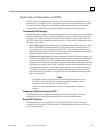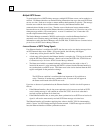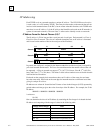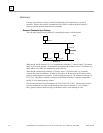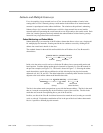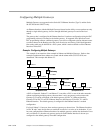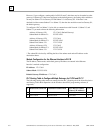
6-4 TCP/IP Ethernet Communications for the Series 90™ PLC User's Manual
–
May 2002 GFK-1541B
6
Gateways
Gateways (also known as routers) connect individual physical networks into a system of
networks. When a node needs to communicate with a node on another physical network, a
gateway transfers the data between the two networks.
Networks Connected by a Gateway
The following example shows Gateway G connecting Network 1 with Network 2.
a45405
172.16.0.1
Network 1
172.17.0.1
172.17.0.2
172.17.0.3
Network 2
172.16.0.2
A
BC
G
Gateway
When host B with IP address 172.17.0.1 communicates with host C, it knows from C’s IP address
that C is on the same network. In an Ethernet environment, B can then resolve C’s IP address to a
MAC address (via ARP) and communicate with C directly.
When host B communicates with host A, it knows from A’s IP address that A is on another
network (the
netids
are different). In order to send data to A, B must have the IP address of the
gateway connecting the two networks. In this example, the gateway’s IP address on Network 2 is
172.17.0.3. This address would be configured in the Ethernet Interface’s module configuration
for PLC B as its default gateway address.
Note that the gateway has two IP addresses (172.16.0.2 and 172.17.0.3). The first must be used
by hosts on Network 1 and the second must be used by hosts on Network 2. To be usable, a
host’s gateway must be addressed using an IP address with a
netid
matching its own.






